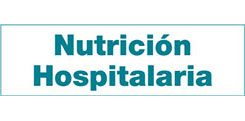Trabajo Original
Causal association of childhood body mass index with risk of endometrioid endometrial cancer — A two-sample Mendelian randomization study
Yaochen Lou, Yan Du, Feng Jiang, Jun Guan
 Número de descargas:
2258
Número de descargas:
2258
 Número de visitas:
1077
Número de visitas:
1077
 Citas:
0
Citas:
0
Compártelo:
Objective: this study aimed to investigate if childhood body mass index (BMI) causally contributed to the risk of endometrial cancer (EC), which had not been well answered. Methods: genetic instruments were selected using single-nucleotide polymorphisms (SNPs) associated with childhood BMI in European population from a large-scale genome-wide association studies (GWAS, n = 39,620). A two-sample Mendelian randomization (MR) study was performed to evaluate the effect of higher childhood BMI on risk of EC. The data for endometrioid EC was obtained from a GWAS dataset comprising 54,884 individuals (8,758 cases and 46,126 controls). Inverse variance weighting (IVW), weighted median, weighted mode, and MR-Egger regression approaches were applied. Results: we selected 16 SNPs with genome-wide significance in childhood BMI for the analysis. The IVW analysis provided a causal link between childhood BMI and EC (beta = 0.408, standard error [SE] = 0.088, p < 0.001). Similarly, the weighted median method also provided robust evidence for the causal correlation (beta = 0.390, SE = 0.119, p < 0.001). Although the MR-Egger regression did not achieve the same significance (beta = 0.071, SE = 0.362, p = 0.848), it showed a minimal intercept value indicating small bias for directionality of pleiotropic effects (intercept = 0.024; p = 0.354). Through Cochran's Q test and visual inspection via funnel plot, the assessment of heterogeneity found no evidence of heterogeneity or asymmetry in our findings, further supporting the absence of directional pleiotropy. Conclusions: childhood BMI and risk of EC might be causally related, and early-life intervention on weight control might be considered for children to reduce the life-span risk of EC.
Palabras Clave: Childhood body mass index. Endometrial cancer. Mendelian randomization. Risk factor. GWAS.
DOI: 10.3322/caac.21660
DOI: 10.3389/fonc.2019.01440
DOI: 10.1056/NEJMra1514010
DOI: 10.3322/caac.21492
DOI: 10.1056/NEJMsr1606602
DOI: 10.1007/978-3-319-42542-9_7
DOI: 10.1016/j.ygyno.2009.03.039
DOI: 10.1016/S0140-6736(08)60269-X
DOI: 10.1186/s13052-023-01458-z
DOI: 10.1038/s43586-021-00092-5
DOI: 10.3390/cancers13205053
DOI: 10.1038/s41366-021-00942-y
DOI: 10.1111/cas.14667
DOI: 10.1371/journal.pone.0143256
DOI: 10.1038/ijo.2016.56
DOI: 10.1002/ijc.30464
DOI: 10.1093/aje/kwt084
DOI: 10.1002/gepi.21758
DOI: 10.1093/ije/dyx028
DOI: 10.1093/ije/dyv080
DOI: 10.1534/genetics.110.122549
DOI: 10.1002/gepi.21965
DOI: 10.1093/ije/dyx102
DOI: 10.7554/eLife.34408
DOI: 10.1002/sim.1186
DOI: 10.1093/ije/dyw220
DOI: 10.1136/bmj.315.7121.1533
DOI: 10.1093/jnci/djac061
DOI: 10.1002/ijc.33691
DOI: 10.1093/hmg/ddv472
DOI: 10.1016/S2213-8587(22)00047-X
DOI: 10.1038/s41366-018-0230-y
DOI: 10.1001/2013.jamapediatrics.319
DOI: 10.1093/hmg/ddu328
Artículos Relacionados:
Carta Editor: Importancia de descartar factor de riesgo por edad en la deficiencia de vitamina b12 inducida por uso de metformina
Gisela Cruz , Karina Maeshiro
Trabajo Original: Síndrome metabólico y grasa visceral en mujeres con un factor de riesgo cardiovascular
Anxela Soto Rodríguez , José Luis García Soidán , Mª Jesús Arias Gómez , Raquel Leirós Rodríguez , Alberto Del Álamo Alonso , Mª Reyes Pérez Fernández
Trabajo Original: Metoclopramida, factor de riesgo para hiperglucemia postprandial en diabetes tipo 2
Trabajo Original: Maternal age as risk factor of prematurity in Spain; Mediterranean area
Revisión: La adiposidad como factor de riesgo del hígado graso no alcohólico; revisión sistemática
Revisión: Nivel de triglicéridos como factor de riesgo durante el embarazo; modelado biológico; revisión sistemática
Trabajo Original: Niveles de actividad física, condición física y tiempo en pantallas en escolares de Bogotá, Colombia: Estudio FUPRECOL
Trabajo Original: Restrained, emotional eating and depression can be a risk factor for metabolic syndrome
Tuğçe Akıllıoğlu , Murat Baş , Gizem Köse
Trabajo Original: Body mass index and risk of inflammatory breast disease: a Mendelian randomization study
Changlong Wei , Xiaofang Wang , Jinsheng Zeng , Gongyin Zhang
Trabajo Original: Causal effect of sarcopenia-related traits on the occurrence and prognosis of breast cancer - A bidirectional and multivariable Mendelian randomization study
Zhijian He , Lujia Zhu , Jie He , Xinwei Chen , Xiaoyang Li , Jian Yu
Trabajo Original: Associations between dietary intake and sarcopenia: a Mendelian randomization study
Nana Zhao , Yunfei Lu , Junjie Liu
Trabajo Original: Causal effects of vitamin D on leukemia risk: insights from two-sample Mendelian randomization analysis
Shupeng Chen , Meiling Zhang , Yao Gao , Yingjian Zeng
Trabajo Original: Higher frequency of adding salt to foods increases the risk of low bone mineral density in individuals over 60 - A Mendelian randomization study
Ying Li , Yuhan Wang , Lianying Guo , Ye Yu , Mengqi Jiang , Lili Deng , Qingyi Zhou , Lu Sun , Xu Feng , Zhuo Zhang
Trabajo Original: Two-sample Mendelian randomization analysis evaluates causal associations between dietary habits and rectal polyps
Lingyue Zhao , Chunsheng Cheng , Guozhen Ma , Guangju Feng , Xingguang Wang
Trabajo Original: Causal relationship between tea intake and bone mineral density at different ages ̶ A Mendelian randomization study
Ting Shen , Yining Guan , Jiaru Cai , Yizhou Jin , Yixin Jiang , Jiaying Lin , Chenxin Yan , Jiawei Sun
Trabajo Original: Association of socioeconomic status and nine modifiable lifestyle factors on esophageal cancer risk in European and East Asian populations — Evidence from a comprehensive Mendelian randomization study
Ruizhi Ye , Fengming Zhang , Guangxian You
Carta Editor: Aleatorización mendeliana en nutrición: el desafío de la diversidad poblacional
Sergio Vladimir Flores-Carrasco , Ángel Roco Videla , Román Montaña-Ramírez
Trabajo Original: Food intake influences the incidence of cardiovascular disease by driving cardiac remodeling — Evidence from a Mendelian randomization
Bingfu Wang , Yulong Song , Yujian Fan , Zhiqiang Zhao
Trabajo Original: Excessive weight as a risk factor for COVID-19 severity ‒ A retrospective study
Ana Beatriz Vasconcelos de Oliveira , Denise Zaffari , José Antonio Tesser Poloni , Morgana Weber , Rochele Cassanta Rossi , Alexandre Losekann
Trabajo Original: Specific dietary micronutrients are causally associated with arthritis subtypes: results from the NHANES 2015-2018 and Mendelian randomization study
Feng Cheng , Yingjia Zhu , Xiaojing Zhang , Fei Xia
Artículos más populares
Revisión: Inteligencia artificial generativa ChatGPT en nutrición clínica: avances y desafíos
ChatGPT y otras herramientas de inteligencia artif...
Revisión: Suplementación con micronutrientes y sus beneficios: ¿por qué y cuándo?
Introducción: los micronutrientes participan en la...
-
Licencia creative commons: Open Access bajo la licencia Creative Commons 4.0 CC BY-NC-SA
https://creativecommons.org/licenses/by-nc-sa/4.0/legalcode




